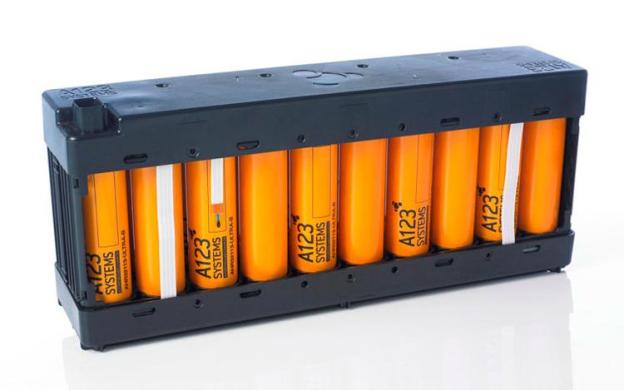 A123 Systems, builder of batteries for Fisker and other car companies, declared bankruptcy earlier this week. The company will sell its EV battery division to Johnson Controls Inc., so the car brands it supplied shouldn’t be affected.
A123 Systems, builder of batteries for Fisker and other car companies, declared bankruptcy earlier this week. The company will sell its EV battery division to Johnson Controls Inc., so the car brands it supplied shouldn’t be affected.
A123 slid into insolvency after defaulting on a large loan payment. The company had bet its future on a deal with Wanxiang Group Corporation, a Chinese car parts company, that had planned to invest $465 million in A123 before the deal fell through.
The Massachusetts-based company was $376 million in debt and $459.8 million in assets.
Johnson Controls will take over battery production at A123’s three factories (two in Michigan, one in China) and assume ownership of all of its intellectual property. Johnson will pay A123 a total of $125 million, including $72.5 million in post-bankruptcy financing, for the EV battery division.
Johnson may also be paying for a bit of a mess. A123 has been in financial trouble for several months because of a scandalous recall of Fisker Karma batteries.
When a Karma shut down during Consumer Reports testing, the problem was traced back to defective battery packs made at A123’s Livonia, Michigan plant. Production at Livonia was suspended, and the company ended up spending $51.6 million to replace the Karma batteries, and $15.2 million to replace other customers’ batteries.
The Consumer Reports debacle was one of two high profile recalls that involved A123 batteries. In December 2011, Fisker recalled 239 Karmas because of badly placed hose clamps that could have caused coolant leaks and fires. The hose clamps were part of sealed battery packs that Fisker received from A123.
Despite the recalls, A123 still has a few important clients. General Motors will be using A123 batteries in the Chevrolet Spark EV, and BMW uses batteries from A123’s China plant in its ActiveHybrid vehicles. Fisker has not indicated that it will switch battery makers.


